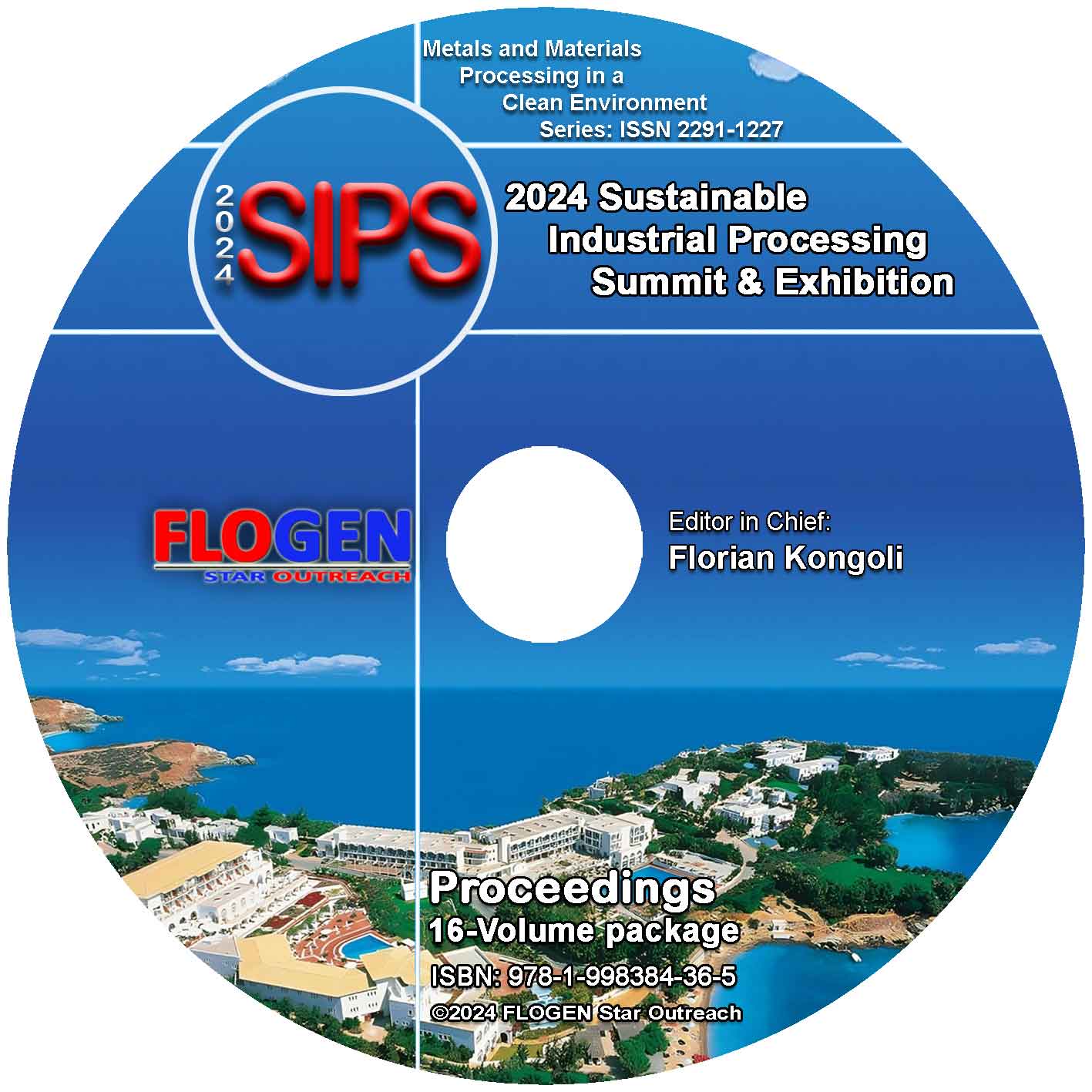2024 - Sustainable Industrial Processing Summit
SIPS 2024 Volume 1. Abe Intl. Symp. / Oxidative Stress and Technological Innovations in Medicine
| Editors: | F. Kongoli, H. Inufusa, T. Yoshikawa, C.A. Amatore, H-Y. Chen, W-H. Huang |
| Publisher: | Flogen Star OUTREACH |
| Publication Year: | 2024 |
| Pages: | 218 pages |
| ISBN: | 978-1-998384-04-4 (CD) |
| ISSN: | 2291-1227 (Metals and Materials Processing in a Clean Environment Series) |

CD shopping page
TELOMERE PROFILES AS A BIOMARKER IN RELATION TO AGEING DISEASES
Nedime Serakinci1; Huseyin Cagsin2; Merdiye Mavis2; Rameez Hassan Pirzada3;1HEALTH ADVISOR, Lefkosa, Turkey; 2NEAR EAST UNIVERSITY, Nicosia, Cyprus; 3AJOU UNIVERSITY, Suwon, South Korea;
Type of Paper: Invited
Id Paper: 194
Topic: 54
Abstract:
The telomere length is suggested and used as a biomarker of human aging simply due to previously telomeres has been suggested to predict longevity. Oxidative stress is presumably one of the major causes of telomere shortening,
Our findings supported the idea of a possible correlation between the TL and biomarkers of oxidative stress in aging. The study has remarkable scope in medical science as the findings on correlation of TL with biomarkers of oxidative stress in aging are novel and they will help in further research against oxidative stress.
During aging, telomeres shorten classically due to cell turnover. Telomere length is mainly maintained by telomerase. This enzyme is present in the embryonic stem cells in high concentrations and declines with age. It is still unclear to what extent there is telomerase in adult stem cells, but considering these are the founder cells to the cells of all tissues in a body, understanding the telomere dynamics and expression of telomerase in adult stem cells is very important.
Telomere length has been implicated as one of the markers for aging related diseases and neoplastic transformation in both in vivo and in vitro studies. During carcinogenesis telomeres shorten due to high cell turnover and repeats are added by active telomerase or alternative lengthening of telomeres (ALT). This gradual shortening is replication driven and does not necessarily explain the presence of ultra-short telomeres.
Ultra-short telomeres are observed when there is a sudden shortening in telomeres not related with cell division and may arise from breaks in telomeres due to oxidative damage and replication slippage. Telomeres have important functions but do shorten through-out life, ultimately causing cellular problems.
Our group has compared different methods that available to evaluate telomere length, with a special focus on the telomere length dynamics in different tissues, both the overall telomere length and telomere length of individual chromosomes in age related disorders.
Thus, our results showed that telomere profiling may be use as an important clinical parameter and supported the idea of a possible correlation between the ultra-short telomeres as biomarkers of aging. Overall telomere science showed that single or a small group of ultra-short telomeres are more influential in senescence associated disease progression rather than shortening that reflected as average telomere length, therefore it is important to identify the presence and load of ultra-short telomeres in diseases.
Our results suggest the using Universal STELA is an accurate method for evaluation of extreme-short telomeres. Compared to golden standard well known TRF assay, that measures mean telomere length, U-STELA is developed to overcome several problems detecting abrupt telomere shortening in a single chromosome out of 92 chromosome ends same time. The novel approach in U-STELA is to anneal a linker or telorette to the G rich 3’ overhang of the telomere which is a product of restriction digestion after DNA isolation. Telorette enables stable PCR of telomeric regions without template slippage ensuring successful completion of PCR.